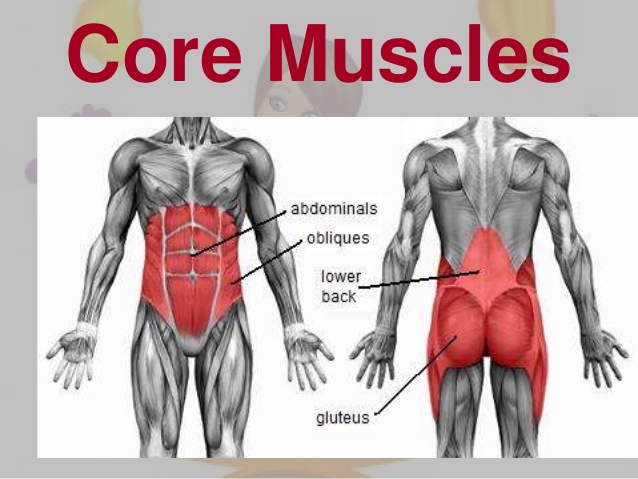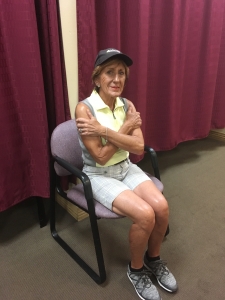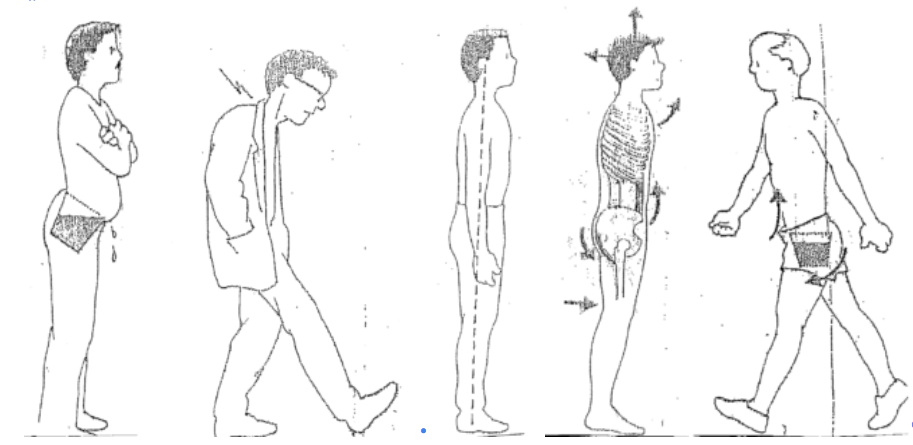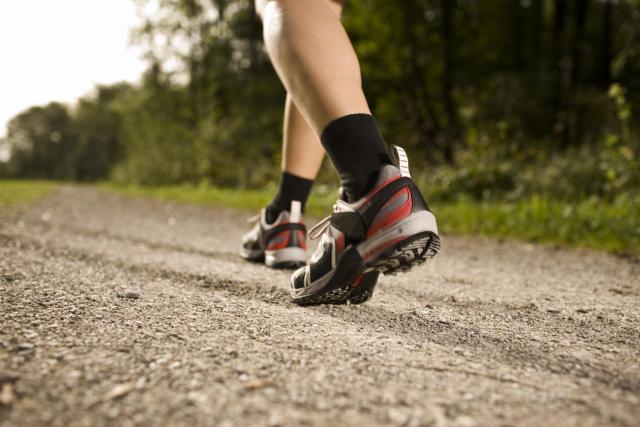WALKING IS BENEFICIAL FOR ALL!!
Walking for 30 to 60 minutes a day is one of the best things you can do for your body, mind, and spirit.
Walkers Live Longer…
The Honolulu Heart Study of 8000 men found that walking just two miles a day cut the risk of death almost in half. The walkers’ risk of death was especially lower from cancer. Other studies have had similar findings – if you keep walking, you improve your chances of a longer and healthier life.
Walking Helps Prevent Weight Gain…
If you add just 2000 more steps a day to your regular activities, you may never gain another pound. So says research by Dr. James O. Hill of the Center for Human Nutrition at the University of Colorado Health Sciences Center. To lose weight, add in more steps.
Walking Reduces Risk of Cancer…
Study after study has shown that walking and exercise reduces your risk of breast cancer and colon cancer. Walking is also good for those undergoing cancer treatment, improving their chances of recovery and survival.
Walking Boosts your Brain Power…
A study of people over 60 funded by the National Council on Aging, published in the July 29, 1999 issue of Nature, found that walking 45 minutes a day at 16-minute mile pace increased the thinking skills of those over 60. The participants started at 15 minutes of walking and built up their time and speed. The result was that the same people were mentally sharper after taking up this walking program.
Walking Reduces Diabetes Risk…
Get out and walk for 30 minutes a day as your minimum daily requirement for health and to prevent Type 2 diabetes. A study by the Graduate School of Public Health, University of Pittsburgh, discovered that walking for 30 minutes a day cut diabetes risks for overweight as well as non-overweight men and women. Walking also helps maintain blood sugar balance for those with diabetes.
Steps to Good Walking Posture
How you hold your body is an important factor in being able to walk comfortably and easily. With good posture, you will be able to breathe easier and you will avoid back pain. Proper walking posture will also make it easier to walk farther and to walk faster while maintaining proper core muscle stabilization.
If you’ve had problems enjoying walking because you feel aches and pains afterward, the first thing to check is your posture and how you carry your head and shoulders.
- Stand up straight. Visualize being tall and straight, like a tree. Do not arch your back.Lengthen the spine towards the ceiling Keep your head on your shoulders, not the chest. Maintain Pilates Posture.
- Do not lean forward or lean back. Leaning puts a strain on the back muscles as you walk, and you should avoid leaning except when on a hill. Unfortunately, some coaches have taught leaning for speedwalking, but it is not necessary, and often people lean too far forward or back.
- Eyes forward: Keep your eyes forward, not looking down. Instead, your focus should be about 20 feet ahead of you. This way you will be able to see your path and anything coming at you from the sides.
- Chin up (parallel to the ground): Keeping your chin up reduces strain on your neck and back. If you walk with your chin down you are not doing your neck any favors. This will also allow you to look ahead 20 feet rather than down at your feet. Walking with the head down is a common walking mistake.
- Shoulders back and relaxed: Shrug once and let your shoulders fall and relax, with your shoulders slightly back. Loosening up the shoulders in this way will help relieve tension and put them into a position to use good arm motion while walking.

Sitting in a chair: Push the low back against the back of the chair.
Inhale to prepare. Blow out and pull the belly button up and back, pushing the back against the chair, (think of pelvis as a bucket, getting it level) elongate the spine ,pull head back on shoulders and sit up straight. Inhale to relax and repeat.
1. Inhale to prepare
2. Stand up straight keep the head on the shoulders, not the chest.
3. Blow out forcefully, like blowing out a candle at the same time pull the pubic bone to the ribs and drive the belly button inward towards the spine, pause and breath in slowly.
4. Repeat every 5 seconds
5..Visualize your pelvis is a bucket of water, pull up on the bucket and keep it level.
6..Repeat through out the day with daily activities including recreational.
7. As the core muscles become stronger less effort is required to
START WALKING WITH IMPROVED POSTURE! Heel/toe walking. Hit with the heel & push off with the toes. Avoid wide stance walking. Step forward of the opposite foot in a straight line.
COMMON WALKING MISTAKES
Walking the right way can give you better health, fitness, and attitude. It can help you walk faster and more smoothly.Walking the wrong way can lead to wasted effort or even injury, not to mention ridicule.
Not Swinging the Arms
It’s a walking mistake to keep your arms still at your sides while walking or swing them without bending them.
It is natural to move your arms while walking to counterbalance your leg motion. But if you keep your arms stiff and straight at your sides, they act like a long pendulum, slowing you down. You can add power and speed by using your arms effectively and more naturally, by bending them and letting them swing naturally forward and back as you walk.
If you keep your arms straight down at your sides while walking, you may notice that your hands swell quite a bit while walking, especially in warm weather.
The Cure for Walking without Arm Motion
Bend your arms 90 degrees and swing them naturally back and forth opposite the leg motion.
WILD ARM MOTION
- Straight Flapping or Paddling Arms: You don’t bend your elbows, your straight arms are flapping like a bird, paddling like a swimmer, or straight at your sides like a penguin as you walk.
- Chicken Winging: You bend your elbows, but swing them from side to side, with your hands crossing past the center of your chest and your elbows endangering other pedestrians.
- High Hands: Your fists come up on each swing past your breasts, up even to your chin or threatening your nose.
-
The Cure for Wild Walking Arm Motion
Keep your elbows close to your body and swing your arms mostly back and forward, as if reaching for your wallet from a back pocket on the backstroke. As they come forward, your hands should not cross the center line and should come up no further than your breasts.This arm motion will give power to your walk. Your feet generally move only as fast as your arms.This motion lets you concentrate on power from your rear leg without wasting motion in front of your body. It also looks far less silly.
OVERSTRIDING
When walkers try to walk faster, a natural inclination is to lenthen your stride in front, reaching out farther with your forward foot. This leads to a clumsy, ungainly gait, striking hard with the feet. Your shins hurt and you really don’t get any faster.
The Cure for Overstriding
All of the power of your walk comes from pushing with the back leg and foot.
- Shorter, Quicker Steps: If you are trying to walk fast, concentrate on taking shorter, quicker steps.
- Roll Through, Push Off: Then think of really rolling through your step with your back foot and leg, getting a good push off.
The result will be faster feet and a longer stride where it does you some good – in back.
Flat-footed walking
Instead of rolling through the step with your forward foot from heel to toe, your foot is flattening out prematurely and you land flat-footed. Either you are fighting stiff, heavy shoes or your shins are too weak to let you roll through the step.
Symptoms
Your feet hit the ground with a slap.You land flat-footed with each step and get no roll. You may develop shin pain.
The Cure for Flapping, Slapping Feet
Get flexible shoes that bend at the ball of the foot. A pair of running shoes with a low heel is best.
To strengthen your shins, ankle, and lower leg:
- Toe raises: Stand on a stair facing upstairs with your heels hanging over the edge. Dip the heels down holding 10 sec, then raise them high. Repeat 10-20 times. Step stretch toe raises
- Foot fun: While sitting around, several times a day, tap your toes quickly for several seconds. Then write the alphabet in the air with your foot. Repeat with the other foot.
COMMON WALKING MYTHS
Arm and Ankle Weights Amp up Your Power Walking
While there is some truth that added weight can burn more calories when walking, wearing arm weights, ankle weights or weighted shoes can be hazardous when powerwalking or racewalking. Nearly every physical therapist will strongly recommend against this as it increases the risk of injury, sometimes serious.
Why? Power walking involves faster, coordinated movements, unlike resistance training where your focus is on one muscle group at a time. If you lose coordination when walking or begin to get tired, you can accidentally miss a step on an uneven surface, strain your knees or hips as you ascend or descend hills, or strain your shoulders if your arms become suddenly exhausted. Fitness walking poles are one good alternative if you want to add challenge to your powerwalking. They not only tone your upper body, they can help relieve strain on your hips, knees, and ankles.
You Need to Drink a Lot of Water When Walking
While it’s true that many of us don’t drink enough water during the course of a day, going overboard is also not a good idea. The new guidelines for endurance exercise are pretty straightforward: drink when thirsty. Drinking too much poses a problem known as hyponatremia a condition where the level of salt in your body is too low.
To ensure you are properly hydrated, follow a few simple tips:
- Drink a tall glass of water an hour before walking.
- While walking, drink about a cup of water (six to eight ounces) every half hour, or more often if you feel thirsty.
- If you plan to walk for more than two hours, get a sports drink to replace some of your lost body salts (electrolytes). Drink when thirsty.
- Weigh yourself immediately before and after a long walk. If you gained weight, you were drinking too much. If you lost weight, you weren’t drinking enough.
IS WALKING 15 MINUTES BENEFICIAL???
Walking for 15 minutes, four times a day burns as many calories as walking steadily for an hour. There may be benefits to combining them into one long walk, but you need to weigh that against what you enjoy doing and what fits into your schedule.
The American Heart Association and the U.S. Centers for Disease Control say in their exercise guideline for healthy adults that you should get 30 minutes of moderately intense exercise such as brisk walking, five days a week, or a total of 150 minutes spread out over the week. But they also say that your exercise time can be broken up into two to three bouts of exercise of 10 to 15 minutes and there is no prescription that it needs to be 30 minutes or more at a time.Once you have built the 15-minute walk habit, then look for a day or two a week you can do a longer walk.
Make the most of the 15 minute walks by using good posture and walking technique. After a warm-up of a couple of minutes at an easy pace, speed up to a brisk pace where you are breathing noticeably.
You will get the most benefits from walking if you have a good upright posture, breathing out pull the belly button up and towards the spine maintaining a level pelvis.Relax your shoulders, especially if you have been hunched over a computer or cell phone.
Keep your head over your shoulders and chin off the chest. Your eyes need to be looking forward, not down at the ground or at your cell phone.
CAN WALKING REDUCE LOW BACK PAIN???
A research study showed that walking for three hours or more a week helped low back pain patients have less pain.
Specific back exercises did not work as well in this study. UCLA researchers studied 681 low back pain patients. One group did specific low back exercises, another group walked the equivalent of three hours of brisk walking per week.
The walking group had less pain, disability, and psychological distress. Unfortunately, the low back exercise group had more pain and distress. This may be due to patients doing the exercises incorrectly. The study was published in the September 2005 issue of the American Journal of Public Health.
A study published in 2013 looked at whether a treadmill walking program worked as well as a back exercise program. The subjects were 52 sedentary people who had chronic low back pain. They split them into two groups. One group was given a six-week clinic-based muscle strengthening program, which required three exercise sessions per week.
The other group instead did treadmill walking at a moderately intense effort (such as with brisk walking). They walked for 20 minutes to begin with and then up to 40 minutes for two to three sessions per week. Both groups had significant improvement in a six-minute walking test, back and abdomen muscle endurance tests and the Low Back Pain Functional Scale (LBPFS).
Those with low back pain should practice good walking posture so as to relieve low back stress. Common walking posture mistakes are leaning forward, leaning back, and failing to keep the head up and eyes forward. Simple corrections to your walking posture can prevent low back pain when you walk and assist in pain relief and recovery for those with low back pain by maintaining Pilates Posture.
Systematic reviews of studies have not found evidence that walking prevents low back pain. One study followed sedentary office workers and found that walking decreased the risk of developing neck pain, but didn’t reduce the incidence of low back pain.
IS THERE A BEST TIME OF DAY TO WALK??
Research on lung function, body rhythms, temperature, and hormone levels says one thing—to exercise around 6 p.m. But exercise in the morning has benefits for improving your metabolism for the rest of the day and ensuring you actually find the time to exercise before the day gets too busy. Explore the pros and cons of when to exercise.
Morning Exercise
There are many benefits to getting in your walks or workouts in the morning.
Pros:
- The majority of people who exercise consistently do so early in the day. It is easier to form the exercise habit through morning exercise.
- Studies have found that morning aerobic exercise improves endurance capacity as compared with evening aerobic exercise. These studies also found that exercise raises your heart rate and metabolism to burn more calories earlier in the day.
- There are fewer distractions and schedule interruptions first thing in the morning.
- You can make time for exercise by getting up a bit earlier.
- Exercise gives a feeling of physical energy for hours.
- Morning exercise improves your mental acuity for hours.
- There are cooler temperatures in summer for enjoying outdoor exercise, compared with later in the day.
- The lowest air pollution levels are in the morning.
Cons:
- Body temperature is at its lowest one to three hours before awakening, making the morning a time of naturally lower energy and blood flow.
- Cold, stiff muscles may be more prone to injury. Be sure to warm up well before doing a higher speed workout, and do gentle stretching.
- If you do not enjoy morning exercise, you won’t easily form a walking habit by choosing a morning workout time.
Afternoon Walking and Exercise
Research shows that afternoon (3 p.m. to 7 p.m.) is the best time to exercise for both performance and for muscle building.
Pros:
- For most people, body temperature and hormone levels peak at 6 p.m. Exercising three hours before or after the peak will give you your best workout for both effort and building muscle.
- Research shows lung function is best at 4 p.m. to 5 p.m.
- Muscles are warm and flexible.
- The afternoon is when you have the lowest perceived exertion of the day: You can exert yourself more while feeling it less, so you may be able to work out harder or faster in the afternoon.
- Afternoon exercise can help regulate the amount of food you feel like eating for dinner.
Cons:
- You may find that things keep coming up that force you or tempt you to socialize rather than exercise.
- If you use the gym for exercise or equipment such as the treadmill, it may be crowded and hard to get the workout you want.
Evening Walking and Exercise
Pros:
- You are in the peak period for body temperature and hormones.
- Muscles are warm and flexible.
- Perceived exertion is low. You may be able to work out harder or faster.
- Evening exercise can help regulate the amount of food you feel like eating for dinner.
Cons:
- You need to allow one to three hours to wind down after walking or exercise to be able to fall asleep. If you discover sleeping problems you need to schedule your workout earlier.
The very best time to walk? Walking can only do you good if you do it. The best time to walk is the time that will fit best into your schedule so you can do it consistently.
Can Walking Predict Your Lifespan?
A large study looked at the natural gait speed of 34,485 participants age 65 and older from nine previous studies. These studies followed outcomes for 12 years or more, in which time almost half of the participants died. They found a consistent effect of how long people lived and whether they had a faster or slower gait speed:
Those who walked naturally at 2.2 miles per hour (27:16 minutes per mile or 1.0 meter per second) or faster were likely to live longer than would be predicted by age and sex alone.
Those who walked naturally at 1.8 miles per hour (33:30 minutes per mile or 0.8 meters per second) were likely to live the average life span for their age and gender.
Those who walked naturally at 1.3 miles per hour (46:09 minutes per mile or 0.6 meters per second) were at greater risk for early mortality.
Shorter than expected life spans were seen for those who walked slower and slower speeds.
The study included a large sampling of age, sex, race/ethnicity, and other subgroups and the median survival of all of the participants resembled that of the U.S. adult population at large. They noted that there could be some biases common to studies that recruit healthy volunteers, such as enrolling fewer people with advanced dementia.
The researchers noted that just because a person walks very slowly, it doesn’t mean that they won’t still live a normal or even increased lifespan. That would depend on the individual.
Walking very slowly usually also means you are walking less and getting less overall physical activity. Without physical activity, you become deconditioned. This can lead to a downward spiral. You walk and move around less and less and your capability to do so declines.
Deconditioning leads to a poorer survival time.
EXERCISE AT TARGET HEART RATE
- Check with your physician for your exercise target rate if you have history of heart problems.Beginners should exercise at 50% to 75 % of target heart rate.
- Individuals exercising for the past 6 to 12 months can exercise at 75 % to 85 % of the target heart rate.
- To establish a target heart rate use this formula: 220 – your age (maximum heart rate) X the % of exercise target heart rate measured in the number of heart beats per minute
Establish your individual target heart rate by using this formula: 220 – your age= maximum heart rate X the percentage of exercise = your target heart rate measured in number of heart beats per minute.
AGE max H/R 50% to 75% 70% to 85 %
55 165 b/m 83 – 123 b/m 115 – 140 b/m
60 160 b/m 80 – 120 b/m 112 – 136 b/m
65 155 b/m 78 – 116 b/m 109 – 132 b/m
70 150 b/m 75 – 113 b/m 105 – 128 b/m
75 145 b/m 73 – 109 b/m 102 -123 b/m
80 140 b/m 70 – 105 b/m 98 – 119 b/m
85 135 b/m 68 – 101 b/m 94 – 114 b/m
90 130 b/m 65 – 97 b/m 91 – 110 b/m
95 125 b/m 62 – 93 b/m 87 – 106 b/m
A common problem for exercisers is lack of variety in their exercise program, causing boredom and plateaus. Research has shown that more than 50 % of people who begin an exercise program will quit within the first 6 months.
Walking is the easiest activity to strengthen our hearts.
You need to know the speed of your walking by counting steps. To determine your speed count steps for 15 seconds and multiply by 4 to determine your steps per minute.
StepsPer Min Miles per hour
75 2.5 m/h
100 3.0 m/h
125 3.5 m/h
135 4.0 m/h
Interval training offers a great way to put variety back into a program. Interval training originated in Europe in the 1930’s as a method to develop speed and endurance in track athletes. Interval training is based on the premise that a greater amount of intense work can be accomplished if the work is interspersed with periods of rest(slower activity).It can be practiced using almost any piece of cardiovascular equipment . The possibilities for varying interval activity is unlimited. With proper planning and creativity, incorporating interval training can help overcome plateaus and boredom and improve your fitness as you work toward 10, 000 steps or more a day.
A goal of 10,000 steps per day was created as a promotion by a pedometer company in Japan in the 1960’s and it has become popular as it was adopted by walking clubs. It was not based on research, it just sounded good. Researchers have found it is a good indicator you are getting somewhere near the recommended amount of physical activity during the day to reduce health risks. A 2016 study of 103,383 American employees in a workplace- based physical activity challenge found that they averaged 6886 steps per day. A study in 2010 of over 1000 Americans found the average of 5117 steps overall with men only slightly ahead of women at 4912 steps.
Nutritional Balance
It is important to maintain overall nutritional balance. Most of us eat the wrong foods 80% of the time and proper foods 20 % of the time.That imbalance creates problems affecting the body. The food we eat plays a vital role in how we look and feel. Regular exercise is important, but according to research, nutrition has the largest impact on our fitness. Using food as our medicine has become a popular theme for health improvement. The trend is now to focus on healthy food intake as a primary fitness goal. When healthy eating habits become a lifestyle, we are healthier and happier. Eating right helps us to reduce body fat, lose a few pounds, feel more confident and reduce the risk of illness.
Recent studies are indicating healthy food intake is the most important part of our fitness programs.
Some physicians are teaching healthy eating habits/lifestyle as a way to improve overall health reducing obesity and related disease. Nutrient-dense foods or superfoods include lean proteins, and fat essential to our health. Superfoods are a rich source of vitamins, minerals and antioxidants. Antioxidants are shown to reduce inflammation in our body helping us fight disease and illness. Inflammation is said to be the leading cause of many diseases.Powful antioxidants in leafy greens and vegetables, for example, help detoxify the body removing harmful chemicals. Eating healthy food will not only help improve health, also reach desired fitness goals.
Your best fat burner is not going to come in a bottle but by eating foods containing certain compounds. Eating foods that stimulate and enhance the fat burning process to help reduce fat more effectively.











